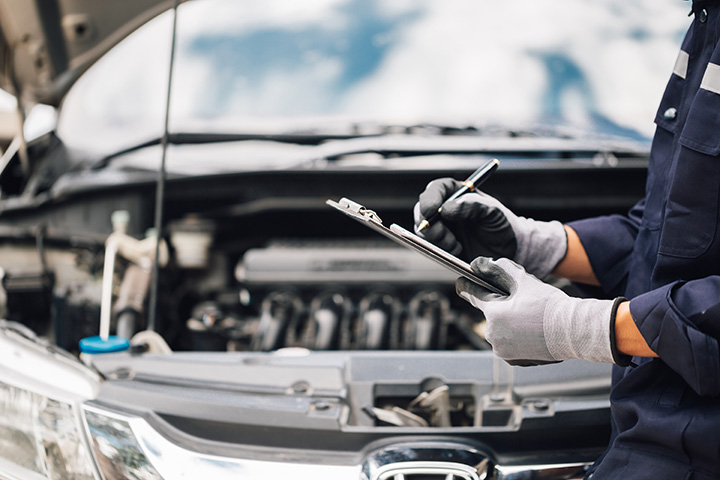Balloon Payment on a Car Loan – Your Questions Answered!
If you’re looking to upgrade your car and comparing car loans, you may have come across the term balloon payment. A balloon payment on a car loan is a type of auto financing that helps you purchase a vehicle without having to pay all the money up front. Instead, you make monthly payments until the end of your loan term, at which point you have one large payment due to pay the remaining balance on the loan. This is called the balloon payment.What is a balloon payment on a car loan?
Balloon payments for car loans have become popular as people look for ways to finance new or luxury cars without having to pay interest on them for years. A balloon payment lets you pay reduced monthly repayments in return for a large lump sum payment at the end of the loan. It is different to traditional financing options such as novated leases, chattel mortgages or bank loans because it has lower monthly payments than either of those options would typically require. Let’s dive into more detail about they work.How does a balloon payment work
A balloon payment is a lump sum payment you will owe your lender at the end of a loan. The term “balloon” comes from the fact that these loans have an inflated lump sum due at the end of the term. In fact, the balloon or final payment is much larger in comparison to your other payments. Balloon payments typically range from between 15% to 50% of the total value of the vehicle. Because balloon payments account for a large proportion of your car loan’s balance, they reduce your regular loan repayments. But it’s important to understand exactly how much money this kind of loan costs and why people choose it over other types of loans. It’s also essential to know why others avoid this type of loan altogether. As with any type of finance, there are pros and cons to consider.
Reasons you might consider car finance with a balloon payment
There are some benefits to balloon payments for car loans, although these depend on the individual financial situation of the borrower:
- Lower weekly, fortnightly or monthly repayments. This can make buying a new car more accessible, which can be particularly beneficial for small businesses with unpredictable cash flow.
- Allows time to save up for other items, or save to pay the lump sum for the balloon payment. Because the regular repayments are lower than a traditional car loan, there may be additional cash available to save.
- You can pay the car off by trading it in or selling it. Unless the value of the car is less than the amount owing, you can simply trade in the car, or sell it, to pay off the balloon.
Why balloon payments on a car loan can be a bad idea
While we have covered some potential benefits to choosing a balloon payment on a car loan, there are a number of disadvantages to consider:
- There’s a big sum to pay at the end of the loan term. While this is an obvious disadvantage, some borrowers are lured by the lower repayments and forget about the size of the balloon once they have signed up to the loan.
- The cost of the car loan is higher in the long term. The balloon payment inflates the amount of interest you pay throughout the loan costing you more interest over the loan term.
- Balloon payments are difficult for borrowers who have trouble managing their finances because they must make sure that they have enough cash available each month in order not only pay off their current balance but also make room for future balloon payments too.
- Balloon payments can be a risky proposition. If you default on your loan, your lender stands to lose a significant amount money.
- A balloon payment on a car loan can be especially challenging if you’re someone who tends towards being impulsive with purchases, such as buying items on credit cards instead of saving up until you can afford them outright.

What are the options when a balloon payment is due?
There’s a few options to weigh up when your balloon payment is due:
- Pay the loan
If you have the funds saved up in the bank, the simplest option is to pay the balloon payment amount so you can release the debt and get full ownership of the car. - Refinance the loan.
Refinancing your balloon payment isn’t an ideal scenario. You’ll end up paying more in interest and you may not easily secure a new loan. You will also be paying off a loan for even longer. - Sell the car
If you no longer need the car, you could sell your vehicle to put towards your balloon payment. An important consideration here is that the car may no longer be worth what it was and therefore it might not cover the full amount owing. - Trade in the car
Trading in the car is a good option if you’re ready to invest in a new vehicle. You may be able to pay off the balloon and get a new loan. Aim to trade in your current vehicle when its value is roughly the same as the balloon payment so there won’t be much difference left to pay. It’s possible you could end up with a positive cash balance to put towards your new car.
Click here for our top tips on buying a used car, buying from a car dealer vs private seller, and vehicle repair loans.

The bottom line on balloon payments for car loans
We hope you now understand what a balloon payment is, how it works and why they are often not an ideal choice when it comes to car financing.
Balloon payment loan structures can be helpful for small business cashflow or for people who like to upgrade their vehicle often, however there are many drawbacks to this type of loan and they often end up costing more than a traditional car loan.
To discuss the best car loan financing options for your unique situation, speak to one of our trusted brokers. We help you save time, money and hassle, and we protect your credit rating!

